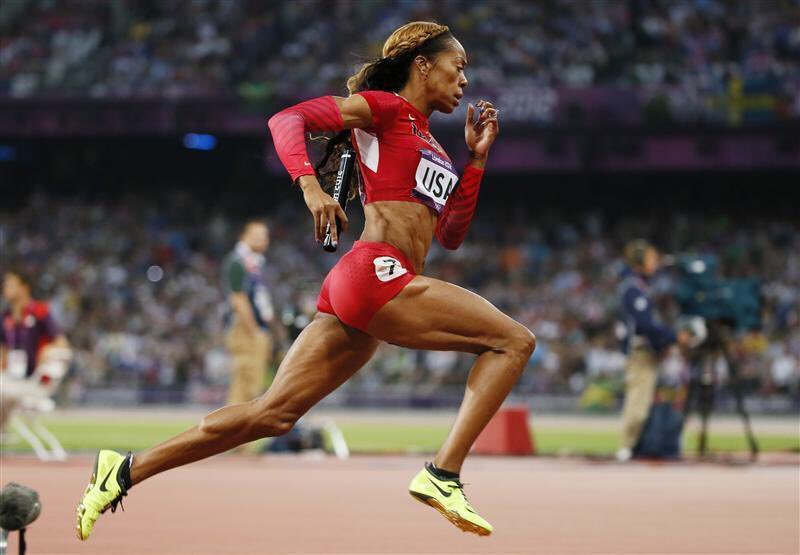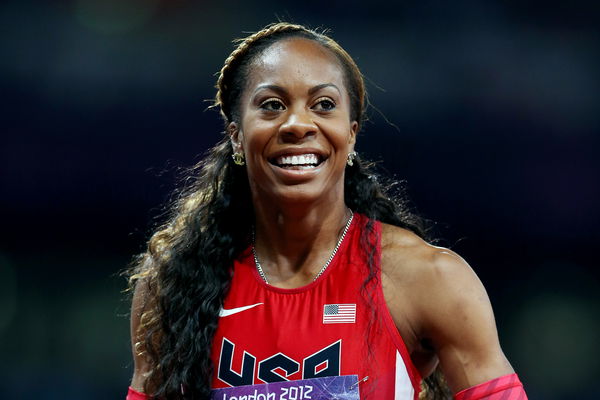

“Someone asked before the race how would I love to go out, and I said I would just enjoy the moment.” Those words hung gently under the July sky, spoken from the heart by a track and field legend standing on the sacred track of the University of Oregon’s Hayward Field in 2016. The crowd leaned in—not just to hear, but to feel. Because this wasn’t just any track, and this wasn’t just any athlete. This was Sanya Richards-Ross. A moment later, she added, “To be able to run a half a victory lap here at Hayward Field for my final 400 that I didn’t finish, I thought was pretty special.” It sounded like the perfect bow on a dazzling career. A victory lap, symbolic, even if it wasn’t tied to a win that day. But was it truly perfect?
Watch What’s Trending Now!
Ask Sanya, and the answer might be layered with more than just applause and nostalgia. The track and field legend had come to the U.S. Olympic Trials in Eugene, aiming for one last shot at Olympic glory—her fourth Games. A chance to close the chapter her way. But fate had its own script. Midway through the 400m race, her body faltered. “I literally felt my hamstring grab on me,” she would later explain. And just like that, it was over. Or was it?
In the nine years since that day, one question continues to echo in the minds of fans and pundits alike: What really led Sanya Richards-Ross to hang up her spikes right there and then? Was it just the hamstring? Or were there signs—hints that maybe her heart, not just her muscle, had reached its finish line? Could she have come back, regrouped, and made one last push for Tokyo or beyond? After all, comebacks are not foreign to track and field. But Sanya chose peace over the grind. Closure over the chase.
ADVERTISEMENT
Behind the graceful smile and composed interviews, maybe there was more—accumulated injuries, mental fatigue, the weight of expectations, or even the desire to step into life beyond the track. Yes, actually. In the YouTube podcast, Meet The Mitchells, Sanya said, “The last two years of my career, I think, more because I knew my career was coming to an end So I had a really bad toe injury that I had been like when I won the Olympics; I was technically running, racing on a broken toe.” The words dropped like a bomb. The host found it hard to believe. However, Sanya kept on telling.

ADVERTISEMENT
“In 2012, the doctors told me to have surgery,” Sanya Richards-Ross revealed in the candid interview. “I was like, I’m not doing it. I mean, there’s no way, you know?” She wasn’t ready to surrender. Not then. Not with Olympic gold on the line. So she fought on—with tape, injections, and a resolve stronger than the pain that radiated from her right big toe. The same toe that quietly became her fiercest opponent. But by 2013, the story took a painful turn.
ADVERTISEMENT
The toe—worn down from years of pounding the track—demanded attention. The former Olympian finally gave in and went under the knife, hoping for relief and revival. Instead, she got disappointment. The surgery didn’t work. And from that moment on, Sanya was running on borrowed time.
“The last four years of my career,” she reflected, “I could see the writing on the wall.” Every race became a battle against her own body. The pain wasn’t just uncomfortable—it was unbearable. And more than that, it was unsustainable. “Just for my quality of life, I was like, I can’t keep doing this… it was so painful to run.” As her body cried out for rest, her mind started looking forward—to something beyond the finish line.“The last two years, I started to see myself as more than an athlete.” It was a quiet transformation. A woman once defined by medals and milliseconds began to see the horizon beyond the track. And by 2016, she knew. The track and field star told everyone it would be her last season. However, Sanya didn’t just leave the sport. She evolved beyond it—on her own terms. Want to know how?
ADVERTISEMENT
The track and field athlete left her impression everywhere
When you talk about greatness on the track, Sanya Richards-Ross’s name echoes with gold, grit, and glory. A five-time Olympic medalist and a true queen of the quarter-mile, Sanya didn’t just run races—she owned them. Her Olympic journey began under the bright lights of Athens in 2004. A 19-year-old with fire in her eyes and speed in her legs, Sanya helped anchor Team USA to gold in the 4×400-meter relay. It was just the beginning.
Four years later, in Beijing, the track and field returned stronger, faster, and hungrier. Again, she powered the U.S. to gold in the 4×400—but this time, she added an individual bronze in the 400m, showing the world that she wasn’t just a relay star. She was a force of her own. Then came London 2012—Sanya’s masterpiece. On the biggest stage in sports, she lit up the track with two brilliant golds: one in her signature 400m and another in the 4×400 relay. Her performance was flawless, emotional, and unforgettable. She became the first American woman in nearly three decades to win an Olympic gold in the 400 meters. That race? Pure poetry in motion.
ADVERTISEMENT

But Sanya wasn’t just a star at the Olympics—she was a global powerhouse. Across World Championship meets, both outdoor and indoor, she racked up nine medals. Also, she and her husband’s company, Coordinates, supplied the pajamas for the Team USA athletes ahead of the Paris Olympics. And did we miss adding her role as the track and field analyst on NBC Sports? Ultimately, from the track to television, from medals to motherhood, Sanya Richards-Ross has lived many lives—but it was on the oval, in those 50 blazing seconds, where she made history time and time again.
ADVERTISEMENT
ADVERTISEMENT
ADVERTISEMENT

